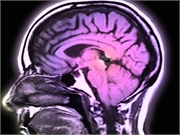Association between baseline tau-PET and subsequent atrophy particularly strong in younger patients
THURSDAY, Jan. 2, 2020 (HealthDay News) — The global intensity of the tau-positron emission tomography (PET) signal predicts the rate of subsequent atrophy in patients at early symptomatic Alzheimer disease (AD) stages, according to a study published in the Jan. 1 issue of Science Translational Medicine.
Renaud La Joie, Ph.D., from the Weill Institute for Neurosciences at the University of California in San Francisco, and colleagues examined whether β-amyloid and tau-PET could predict subsequent brain atrophy measured using longitudinal magnetic resonance imaging acquired at the time of PET and 15 months later in a group of 32 patients at early symptomatic AD stages.
The researchers found that independent of baseline cortical thickness, the global intensity of the tau-PET, but not β-amyloid-PET, signal predicted the rate of subsequent atrophy. In additional investigations, the specific distribution of the tau-PET signal strongly indicated the topography of future atrophy at the single patient level; in younger patients, the association between baseline tau-PET and subsequent atrophy was particularly strong.
“Tau PET could be an extremely valuable precision medicine tool for future clinical trials,” a coauthor said in a statement. “The ability to sensitively track tau accumulation in living patients would for the first time let clinical researchers seek out treatments that can slow down or even prevent the specific pattern of brain atrophy predicted for each patient.”
Several authors disclosed financial ties to the pharmaceutical industry.
Copyright © 2020 HealthDay. All rights reserved.








